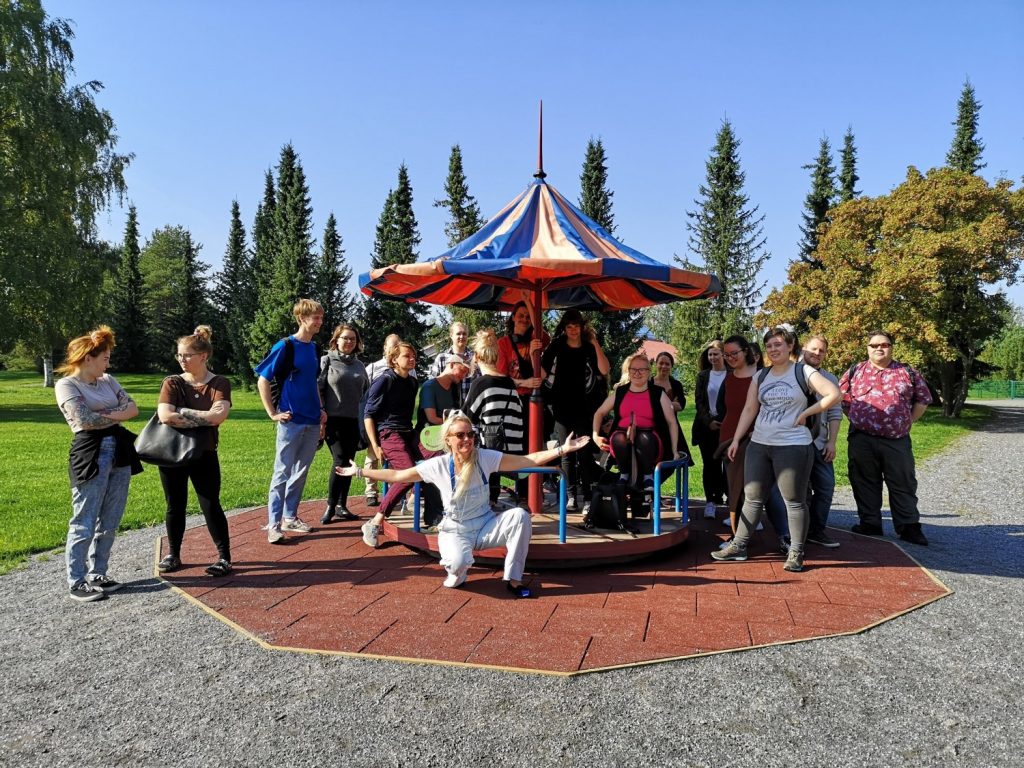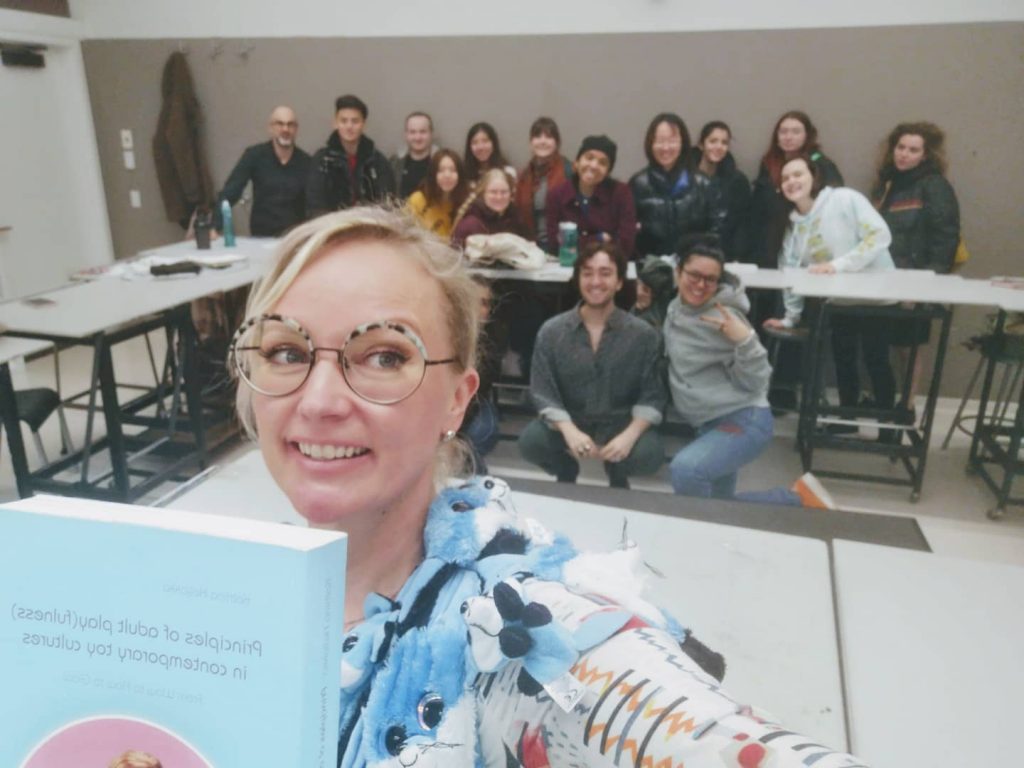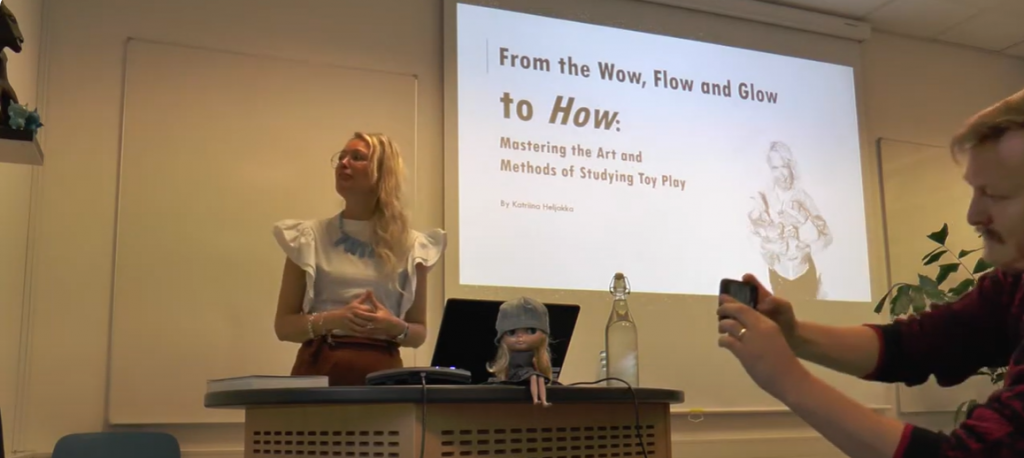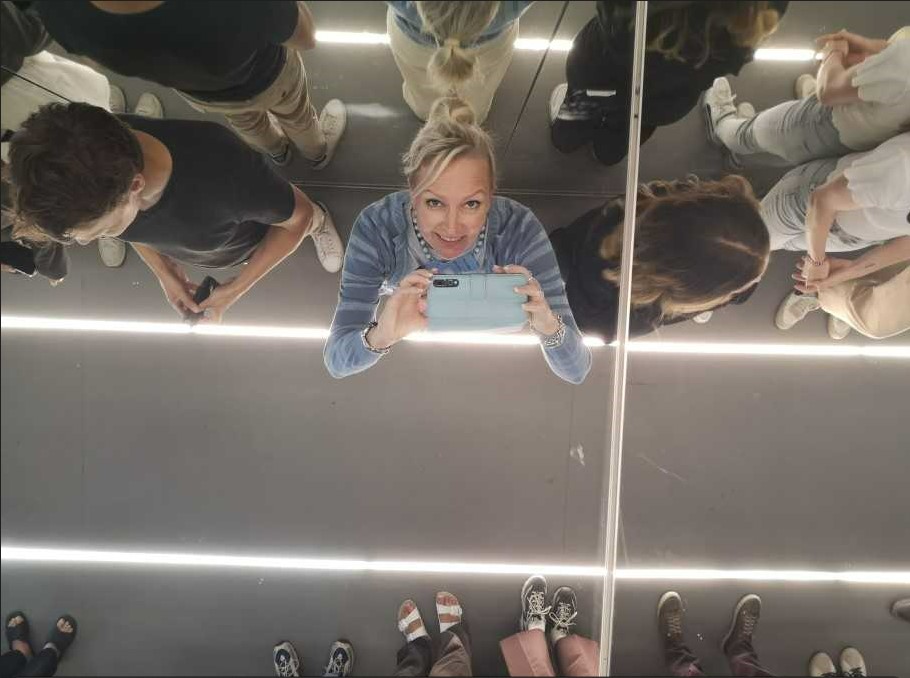My approach to teaching and learning
My subject of study and area of expertise is play, and therefore, almost all coursework I have designed and conducted so far has been very experimental and exploratory in nature, following the “what if?” logic of play. This does not mean that the courses I have previously planned and designed would have lacked structure or visible goals—rather, I have let them grow organically both content-wise and method-wise. Appreciating the process as a source of learning more than the outcome as a source of it, such as the completion of a final task, is very close to what playing is about—more interested in the journey than the destination.
What I consider teaching is planning, designing, and organizing coursework and using interactive exercises to train students to bridge the conceptual with the practical—a very content-driven and application-directed approach to teaching. I have taught indoors and outdoors by lecturing and through interactive exercises. I have taken students to parks, museums, escape rooms, and playgrounds to observe various phenomena and interact with these environments, etc.
Coverage of course design + educational experience
Since the beginning of my researcher career, which has involved several different projects, I have designed and conducted course work with students coming from different disciplines. The common nominator for the courses I have designed and been responsible for is the phenomenon of play(fulness), which I have taught in terms of theory and practical applications. During the courses, I have also tried out and tested my own exploratory methods of teaching together with tools I have developed myself, which I considered as ‘playful approaches’.
Leikillinen ja pelillinen muotoilu / Playful and gameful design, 5 credits, 2023
Leikillistyvä museotila / Playful Museum, 5 credits, 2021
Leikillistyvä maailma / Playful World 5 credits, 2019
Turismi ja elämysteollisuus leikillistyvässä maailmassa / Tourism and experience industry in a playful world, 3 credits, 2018
Leikin materiaalisuus 2.0 / Materiality of Play 2.0, 5 credits, 2017
Leikin materiaalisuus / Materiality of Play 5 credits, 2015

Playful learning situations + guest lectures
So far, my own experience of teaching has only involved relatively small groups of students, for whom I have given lectures and organized participatory course work, but alongside the courses designed and given by myself, I have been invited to give guest lectures on my research area in various scientific fields, and as part of different contexts (academia, the public sector, studia generalia etc.) and countries.
I have given research presentations, lectures, keynotes and Masterclasses at schools such as MIT, Parson’s School of Design, Fashion Institute of Technology (New York), OTIS School of Design (Los Angeles), IT University of Copenhagen, Hong Kong Polytechnic, Delft university, and at universities and design schools across the Nordics.

Here you may access example videos of my presentations and guest lectures:
(In English)
Heljakka, Katriina (2024) ”Toys, Media and Machines” Games Now! Aalto University, 19.2.2024, Helsinki. https://www.youtube.com/watch?v=jmW4AvoVyuk
Heljakka, Katriina (2018) “From Wow, Flow and Glow to How. Mastering the Art and Methods of Studying Toy Play” as part of ”PlayThings: understanding play with toys”. Bootcamp Playtrack, Aarhus University. https://www.youtube.com/watch?v=3s3uqTQFPD0&feature=youtu.be

(Suomeksi)
Heljakka, Katriina (2022) ”Leikki osallisuuden vahvistajana”. Yksi yhteinen lapsuus -seminaari, Kehitysvammaliitto, Tampere. https://youtu.be/f90TcIQxSw0
Heljakka, Katriina (2021) ”Teknologisoituva ja verkottuva leikki”. Mannerheimin Lastensuojeluliiton Leikkipäivä-webinaari 3.11.2021. https://leikkipaiva.fi/tutkimustietoa-leikista/muuntuva-leikki-seminaari/
Heljakka, Katriina (2019) ”Vapaus leikkiä. Leikillisten tilojen utopioista. Rosenlew Museo 2.12.2019. https://youtu.be/MUKD_RpDI6Q
Heljakka, Katriina (2018) ”Aikuisten leikki”. Studia generalia -luento. Pelitutkimus Suomessa -luentosarja, 17.4.2018. https://www.youtube.com/watch?v=CrDCTkOawwA&list=PLaTzOIBDJFEBXatCw4gluqrInhqSAiJau&index=11&t=1s
Heljakka, Katriina (2015) ”Lelut taiteessa, taide leluissa”. Porin taidemuseon luentosarja. 28.10.2015. https://www.youtube.com/watch?v=oDGMkprO1L4
Playful (material and spatial) approaches
I have designed, created and developed a tool based on paper-technology, Comicubes, which has been used as part of workshop style teaching to supplement various challenges the students have worked with either individually or as part of groups. The scalable, playful tool and prototyping method Comicubes (the Comicubes template accessible below), which I have employed in my teaching in association with various challenges to enhance conceptual thinking, and to prototype physical and three-dimensional sketches for ideas on products, services, and environments.
“It was nice to demonstrate the design [of the playful museum space] first with the smaller cubes and then use the large ones [Comicubes] in the classroom. The cubes were a workable tool and we used them both in their two-dimensional and three-dimensional formats.” (Student feedback, Playful Museum course)
With my colleagues, I have experimented with unconventional teaching methods and materials, such as rethinking the airport security control, or creating a pseudo-museum environment by building conceptual models with large scale tools, and participated in teaching sessions in which students have entered a ‘SharkTank’ to pitch their ideas about playful online platforms for the purposes of e-commerce. One course culminated in the execution of an interactive scientific lecture given for hundreds of school children.

The use of technology (blended learning environments) to add participatory elements in the interaction, such as real-time surveys and other easy tasks operated by student’s using their smartphones and projected on a screen, which the teacher controls, have become increasingly popular as part of current e-learning environments. Giving the students something to do during the lecture might help the activation of learning and help students to position themselves as active agents in the learning situation. For this purpose, I have used digital tools such as game apps, Flinga and Kahoot.
In 2018-2019 I co-designed the physical play space for a multidisciplinary audience at Pori University Consortium, Pori Laboratory of Play. The design project is reported in the awarded research publication, which received the AMPS Critical Futures Award in 2020:
Heljakka, K. & Blomberg, A. (2022). Materialising Playfulness: Developing a Social Play Space for a Multidisciplinary Research Community. In Anderson, Kelly L. (Ed.) Participatory Practice in Space, Place and Service Design. Questions of Access, Engagment and Creative Experience. Vernon Press, 125–144.
AMPS Critical Futures Award 2020 https://amps-research.com/critical-futures-award/
Feedback from students and co-teachers
I have systematically gathered student feedback from each course I have given. Some examples follow:
“The teaching style of the course was really great, intensive but casual. Sitting in a circle probably awakened more conversation and eased up the tension. The activities of many kinds and tasks were instructive. The theoretical side of the course was interesting, and did not at all feel like ‘lecturing’. I think that the course had a safe atmosphere, which is really important everywhere, and I believe that I learned communication, open-mindedness, listening to others and caring for others’ opinions [more] than theory. This is a good thing!” (Student feedback, Playful Museum course)
”I especially like it how the imagination was given a lot of room in this kind of an ideation project, but things were at the same time also considered from realistic and concrete perspectives.” (Student feedback, Playful Museum course)
The course has been surprising, challenging, and also a bold leap into both my own imaginative world and the shared one within the group. The group, being adequately small yet appropriately large, has paved the way for various encounters. Working on tasks individually, with a partner, in groups of three to four, and together as a nine-person team has been a unique experience. The atmosphere has been relaxed, free, humorous, and slightly mischievous, but also supportive of each other, creating a trustful environment in its own special way. (Student feedback, Playful and Gameful Design course)
Fellow teachers have given positive feedback for our teaching collaboration and workshops. Some examples:
”Through the playful interventions, workshops, and conference presentations we have conducted together, I have learned to know Katriina not only as a dedicated, creative, and future-oriented researcher but also as a committed collaborator in designing novel approaches to playful learning. She is an exceptionally brave, innovative, original, and creative researcher deeply committed to contributing to culture and society through her research and teaching activities.” (Marjaana Kangas, Ph.D., University lecturer, Docent, playful and game-based learning, University of Lapland)
“Katriina has been teaching in Technology & Society course for three times now, and I really appreciate her innovative and inspiring approach to teaching. Her robust experience in research is reflected in her lectures, and the students always seem to be engaged and eager to hear more. Working with Katriina is always a pleasure!” (Johanna Ylipulli, Academy Research Fellow, Principal Investigator, Docent, Ph.D., Aalto University)
Dr. Katriina Heljakka has participated as a co-teacher in my course ”Entrepreneurial Opportunities” for three years, where, as the name of the course suggests, students brainstorm and assess entrepreneurial opportunities. Heljakka has introduced playful methods to the course (expert lectures on playfulness/gamification and related workshops and tasks). These have supported student creativity, aided in team building, and facilitated the ideation of entrepreneurial opportunities. I have received positive feedback from students about the workshops, and I have been very inspired by the content myself. Heljakka has also contributed to the expert panel, providing feedback to students as they pitch their ideas. (Kati Suomi, Assistant Professor, Turku School of Economics)
”I have had the privilege of teaching alongside Katriina, where we engaged design students in interactive and playful activities, harnessing tools like the ‘Comicubes’ created by Katriina herself. Katriina possesses an exceptional talent for establishing strong connections with students and seamlessly integrating playfulness as both a teaching method and a subject matter. Collaborating with her has been a wonderful experience, and I have sincerely appreciated our teaching partnership.” (Jesper Falck Legaard, Associate Professor, LAB for Play & Design, Designskolen Kolding)